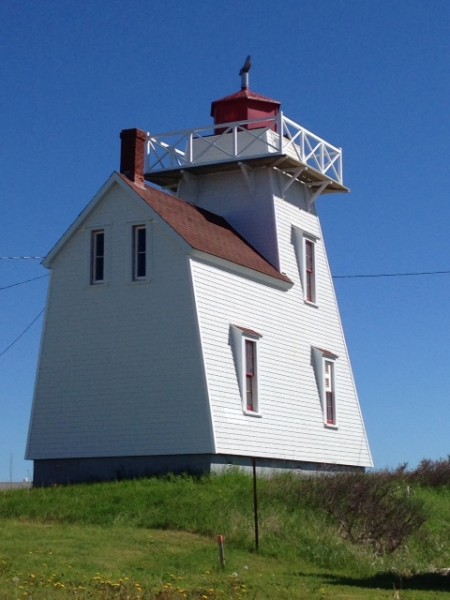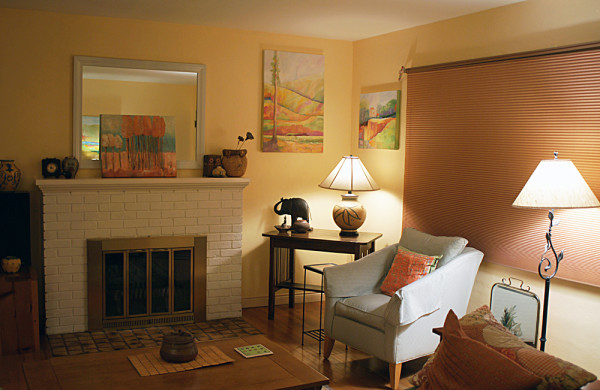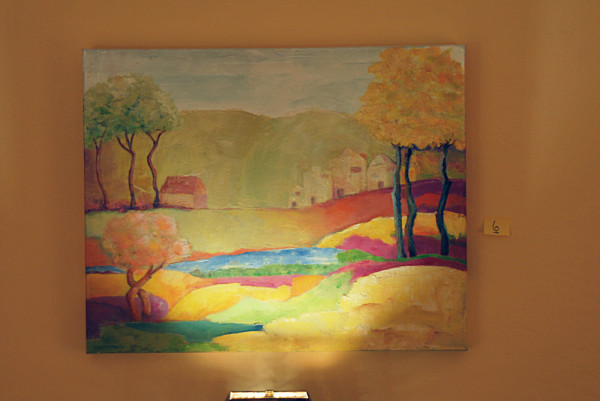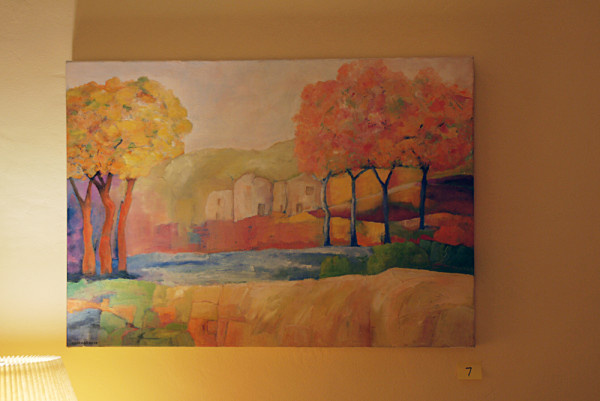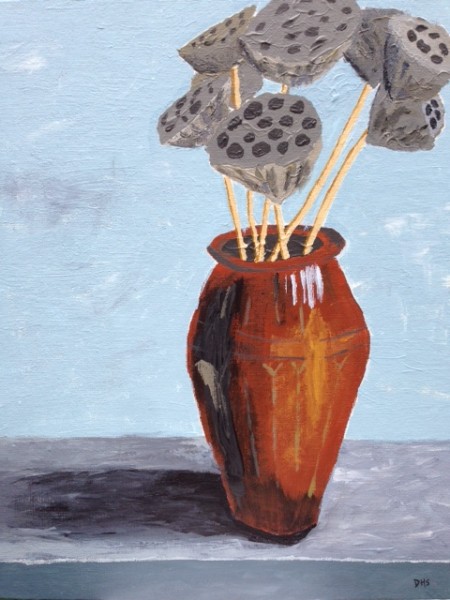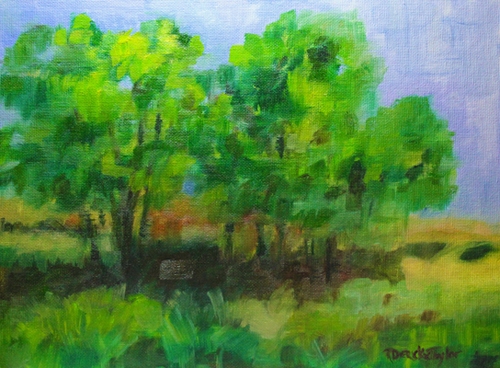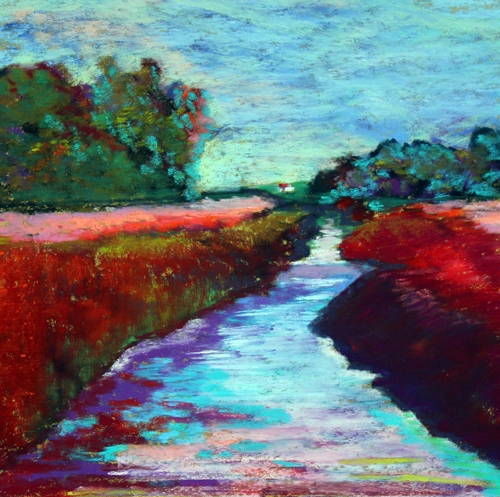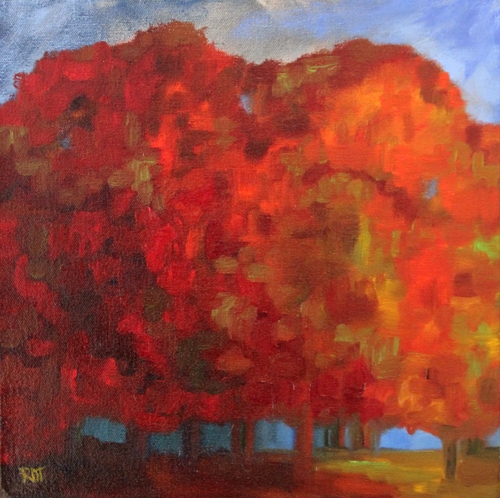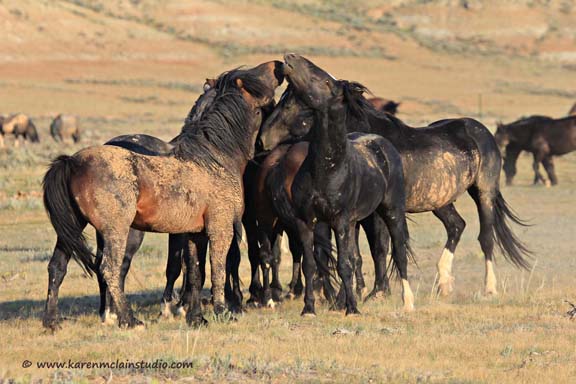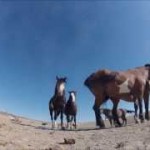Guest Post by Dotty Seiter
A painter sometimes copies a master’s work to explore aspects of painting-Imitation of a Masterpiece. Similarly, I appropriated the structure and gist of master poet Billy Collins’ I Ask You to give words to my experience of a total-immersion painting weekend with artist/teacher Ann Marquis and longtime best friend Sylvia in May.
I Ask You
What scene would I want to be enveloped in more than this one,
a sunny morning in May at Sylvia’s kitchen table,
floor-to-ceiling window panes letting in light,
pale walls cocooning our makeshift studio space,
no computer in sight,
my hand held high on a paint brush?
It gives me entrée into here and now—
the play of light and reflection on the glass table,
cadmium yellow and mars black yielding to my palette knife—
while past the backyard oaks the world spins round,
ideas, thoughts, chores, and projects swirling in a frenzy.
Beyond this table there is nothing that I need,
not even a hands-off job with passive income,
or a house by the ocean with an enormous front porch.
No, it’s all here,
muddied rinse water in a plastic container,
a glazed vase holding dried lotus pods,
a nine-inch color wheel,
not to mention Ruth’s still life leaning against the wall,
and the way three hearts—each a different hue and value—
are painting together in perfect harmony.
So forgive me if I cock my head now
and watch Ann bring acrylics to life on her canvas
while my eyes light up in my hand—
sparklers after dark on a summer evening—
and my attention lasers to a whole universe
made of one small canvas
and roughly a million possibilities.
I had no idea when I headed into the weekend with Ann and Sylvia that painting—something I’d never done before—would grab me by the hand and hold fast. No idea.
I returned from Chicago and immediately set up a makeshift studio in my home, north of Boston. I paint nearly every day now, even if only for a few minutes, even if my already over-busy schedule doesn’t allow. When I paint, time falls away completely. I remember this kind of timelessness from when I was eight years old, clambering over the rocky shoreline in front of a summer cottage in Connecticut while a wordless conversation took place between my eyes and feet, and all senses were alert and activated. I pick up a paintbrush now and enter that kind of zone again. All that exists is what is in front of me—that which my hands, eyes, and mind create.
My first paintings, all five of them!, were mostly realist—pods in a vase, a pear, a tree, an apple, a lighthouse. The lighthouse, in particular, is highly representational, capturing a likeness of one that sat a few hundred feet from the cottage where my husband Dave and I savored a sweet vacation together on Prince Edward Island early in June. In painting the lighthouse I grappled with perspective, shadow and detail, and I was pleased with its photographic qualities.
But … something in me was restless. I wanted to paint that lighthouse again. Quickly, playfully, inventively. I wanted to venture into what I think of as impressionism, not that I even know exactly what impressionism really is.
I was paralyzed for a few days. I couldn’t think of how to start. If I didn’t paint exactly what I saw in the photo I was working from, i.e. the white clapboards, the red roof, the deep blue sky, the green grasses, the accurate-as-I-could-get-it shape of the structure, what would I paint?
This, it turns out!
I completed a first draft in an hour. That alone was bold and freeing for me. Though I later fussed a bit with details, I had taken an important step away from my go-to inclination to be literal.
Now I’m restless again. Much as I might have loosened up with my second lighthouse painting, it is by no means loose! Painting keeps pushing me to let go, make mistakes, start again, make more mistakes, stop being tight and stingy, stretch past comfort into new territory. I’m calling First Impression complete and moving on, perceiving with enlivening recognition that whether any one painting is complete or not, painting is a gateway for me and I will always be a work in progress!
